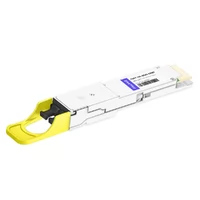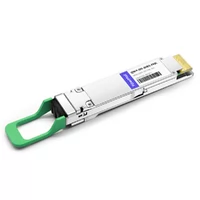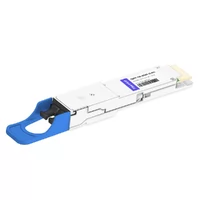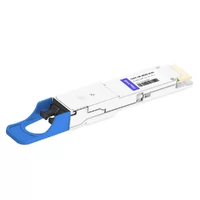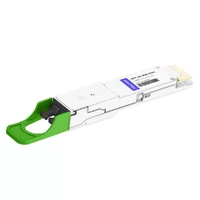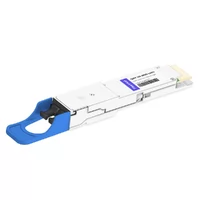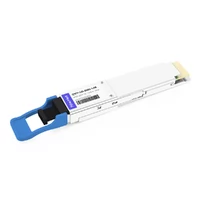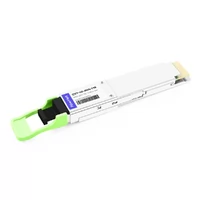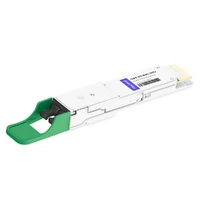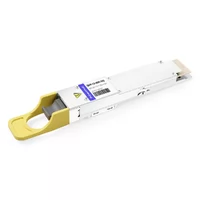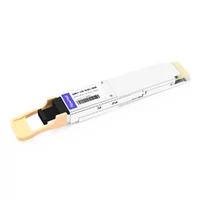Owing to the persistent requirements for increased bandwidth and speed of data transmission, 800g QSFP-DD optical transceivers have been developed as one of the most advanced technologies in data centers and networks. These transceivers allow astonishingly high data transfer rates and play an elusive role in solving future-generation connectivity issues demanding increased traffic and reduced latency. For experts in the telecommunications sector, knowledge of these technical characteristics, performance parameters, and integration standards is important to improve the efficiency and capacity of networks. This article investigates in detail the design structure, functionalities, and areas of use of 800g QSFP-DD optical transceivers, thereby giving an overview for those in authority with regard to the use of these new technologies.
Table of Contents
ToggleWhat is the 800g QSFP-DD Transceiver?
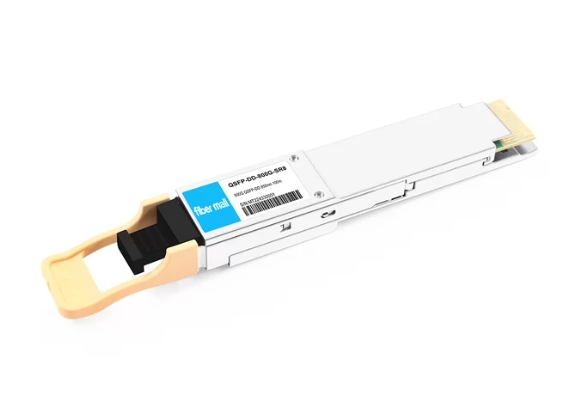
The QSFP-DD transceiver is an 800g optical module capable of handling a throughput of 800 gbs worth of data. In addition, it makes use of the QSFP-DD interface, which enhances bandwidth density and efficiency in the network environments. This transceiver is suitable for advanced data centers and telecommunications infrastructure where minimizing latency and maximizing throughput is critical. The transceiver is designed according to some set industry standards, which means that it will work with previously installed systems, allowing for better interconnectivity of the network.
Key Features of the 800g QSFP-DD
The operational capability of the transceiver has a weight of 800 grams which is inclusive of various latest characteristics for improved performance as well as versatility when deployed within active network environments.
- Increased Port Density: The dual density doubled which the QoSSpDD module offered in relation to common QoSSp interfaces meant that physical space inefficiencies were mitigated allowing the expansion of data centers without requiring more space.
- Power Efficiency: While preserving better performance output, the eight G creamers interfaces maintained optimal efficiency because of advanced technologies engineered which assisted in the minimization of power consumption with critical power issues being made more of challenge.
- High Data Rate Support: The connection with the C agriculture world point of making claim saying the gex towering the new generation supporting transets and won the spec most respectful is building telecom networks was remarkable selling.
- Compatibility and Scalability: the transceiver which was easily modified supported more machines, allowing honest appearances of machines with substantial enhancements without huge costly largescale changes.
- Low Latency Performance: While on the one hand, th e module provided a significant improvement for speed on the other hand it optimized convergence speed of data transmission optimally for occasions making age exchange of data with the least delay possible.
- Advanced Modulation Formats: engineering feat of transaxle contacting PAM4 technology increased a modes stronger data encoding enabling the available bandwidth to be used more efficiently with a higher output if data generally required.
The combination of these characteristics highlights the importance of the 800g Qsfp Dw Msa transceivers in the evolution of the network infrastructure with advanced techniques that are able to suffice the ever-increasing burden of the digital communication.
Understanding QSFP-DD Module Technology
The QSFP-DD (Quad Small Form-factor Pluggable Double Density) module, in all likelihood, offers an improvement in data rates over its predecessors. It is meant to cater to the rising requirements of high data rates within the domains of telecom and data centers. With the use of novel modulation techniques such as PAM4, the QSFP-DD can theoretically support throughput of 800 gigabits per second whilst still being backward compatible with legacy networks. The increase in the number of ports in the module has increased the density of the ports, which optimizes the use of floor space and increases densification in data centers. As a result of low latency and energy requirements, QSFP-DD modules can achieve impressive throughput whilst being energy efficient and environmentally friendly, making them suitable for today’s and tomorrow’s networking demands.
How Does the 800g Transceiver Compare to Other Options?
In the circumstances of working with high-speed networks, among the different types of transceivers, the 800g QSFP-DD transceiver seems to have more advanced features and performs better than the others. Below is a comparative analysis that explains how this transceiver is better than others in the category of transceivers:
- 400g QSFP-DD: The 400g model has lower data throughput, but it’s still in demand because it’s low in cost and uses less power; on the other hand, it cannot support the modulation density and density of the ports, which are there in the 800g version, thus isn’t ideal for technologies that require larger amounts of data to be transferred at a fast rate.
- 200g QSFP56: In the intermediate range of the functionality, ranges the QSFP56 that provides reasonable bandwidths and reasonable power usage, although they can be implemented at reasonably sized functioning environments they however do not have the same growth potential as the 800g QSFP-DD for they have fewer lanes and less data transfer rate.
- 100g QSFP28: The 100g QSFP28 is commonly used in legacy systems and structures as it is low in cost and does not draw a lot of power. However, while employing it, one cannot expect the connectivity and versatility of the 800g model especially when used in modern data centers.
- 50g SFP56: Furthermore, the 50g SFP56 can be used in instances where space is greatly constrained and low power consumption is a focus. However, this restricts the resulting data rates and scalability to a much lower degree, which makes it impractical for use on tasks requiring relays of huge amounts of data that are performed by the 800g transceiver.
Through these comparisons, it is evident that the 800g QSFP-DD transceiver is the suitable candidate for use in networks that are anticipated for the future with regards to effective management of changes and the growth of data traffic.
How Does the 800g QSFP-DD Specification Impact Performance?
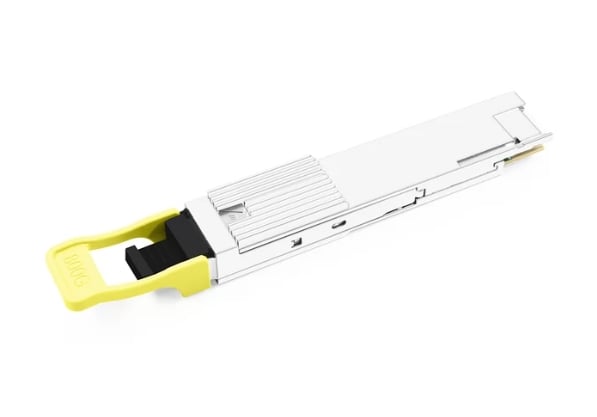
The Role of PAM4 in 800g Transceiver Module
The signal bandwidth does not need to be increased so much thanks to PAM4 or Pulse Amplitude Modulation, which adds two bits of data encoding for every symbol. This protocol increases the performance of the 800g transceiver while preserving compatible signals. Performance of transceivers meeting the specifications of QSFP-DD 800g interface is achieved by PAM4, which in turn reduces the pressure on the transceiver and allows it to operate in 800g interface environments.
800G and Its Compliance with Industry Standards
The 800g QSFP-DD transceiver meets the global standards established by IEEE and MSA groups, including performance, interoperability, and reliability in high-speed data networks. To achieve this, organizations such as the MSA and the IEEE set strict limits on optical and electrical specifications. An example would be how the IEEE 802.3bs/802.3cd standards establish requirements for 200G and 400G Ethernet which are some of the core technologies developed for the 800G. In addition, the OIF has several implementation agreements, such as CEI-112G, for electrical connectivity, which is important in maintaining the integrity of the electrical signal within the module. At the same time, the 800G MSA group addresses the mechanical, electrical, and thermal specifications of the module in order to meet requirements regarding types of connectors, power usage, and thermal management for support across different network types. Therefore, not only is the 800g QSFP-DD transceiver one of the most advanced technologies, but it enables massive parallel optical interconnections while allowing the user to adhere to strict performance requirements across a wide range of application scenarios.
Efficiency of the Optical Link and Data Transmission
When working with optical networks, the particularity of the optical link and the data transmission are quite essential for making sure that the network and the services offered are of good quality. The performance of the optical link is, to a large extent, determined by the insertion loss, dispersion, and some nonlinear effects. Various modulation formats and error correction methods are applied in order to alleviate these impairments and increase the efficiency and effectiveness of data transmission. In addition, Dense Wavelength Division Multiplexing enables the use of several light wavelengths which improves the usability of the available bandwidth even more. The use of coherent optics technology also eliminates distance limitation for communications because of improved sensitivity and signal integrity with phase detection and compensation techniques. In addition, advanced optical links incorporate a high-capacity network workload, such as amplified optical routes and active optimized wavelength assignment, ensuring efficient operation with low latency. As a result, the combination of the abovementioned technologies and techniques leads to the formation of an effective optical network against the backdrop of growing requirements in the field of data transmission.
What do Customers Say About 800g QSFP-DD?
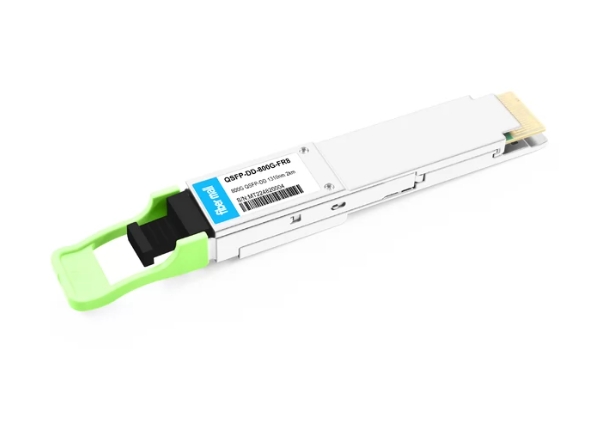
User Experiences with 800g Transceivers
Clients have great feedback for the 800g QSFP-DD transceivers. Their insights point out the strong performance rendered by the transceivers in terms of data rates, which substantially improves the capacity of the systems. High resilience with the existing systems is achieved frequently so that upgrading doesn’t require a lot of modifications. What is more, they do not use a lot of power, and so the operating costs decrease. The consistency and the low maintenance required for the use of these transceivers are other aspects that are emphasized as favorable in settings with high demand.
Comparing 800G Solutions from Different Manufacturers
The scenario of this field has seen the introduction of a variety of players, which has resulted in the offer of 800G transceivers to vary in unique ways tailored for different network scenarios. Below is a list of the most notable options on the market.
Cisco
- Model: Cisco QSFP-DD 800G transceiver.
- Key Features: Modern thermal management capabilities, optimize to the maximum extent existing infrastructure and work effortlessly with also Cisco’s equipment.
- Performance Data: The network has enhanced reliability and efficiency due to excellent thermal dissipation features.
Arista Networks
- Model: Arista QSFP-DD 800G .
- Key Features: bringing latency performance into a new level, higher density solutions and application of strong software to improve the visibility of the network.
- Performance Data: Functioning reliably while being energy efficient at the same time and throughout data fluctuations.
Juniper Networks
- Model: Juniper JNP-QSFP800.
- Key Features: Best-in-class signal quality, a wide range of security features, and fast implementation.
- Performance Data: Satisfactory power consumption levels alongside respectable distance capabilities and power integrity are all features it supports.
Huawei
- Model: Huawei OptiXtrans 800G.
- Key Features: diverse solutions with sophisticated modulation formats and system-level interoperability.
- Performance Data: This provides a great amount of energy efficient as well as reliable throughput to a large distance.
Broadcom
- Model: Broadcom BCM800G.
- Key Features include precise integration with Broadcom network chips and new-generation ASIC technologies and a focus on the overall OPEX.
- Performance Data: High reliability and good throughput are among its features.
All of these vendors offer solutions according to demands and environments of their network with the help of differentiators like power saving, integration, or even saving of operational costs. Network operators can decide on particular performance and compatibility specifications in order to enhance the efficiency of their communication systems’ performance.
Exploring the Applications of 800g QSFP-DD Modules
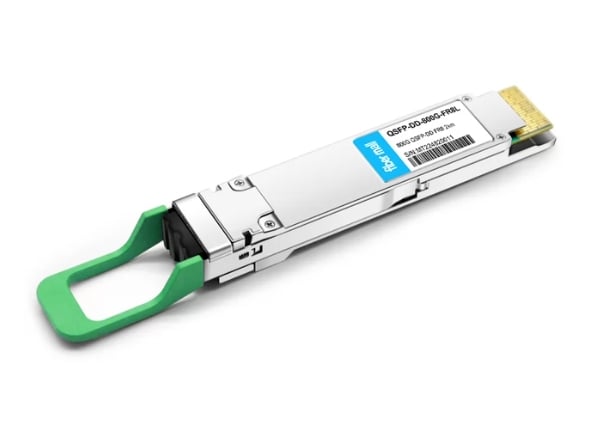
Use of 800g in Ethernet Networks
The use of 800G QSFP-DD modules contributes greatly to the expansion of Ethernet architectures, allowing for faster and better data transmission without the necessity to rearrange the already existing infrastructure. They are compatible with high-density data center spaces and allow for smooth upgrades with low activity loss. Their performance is low latency, which is suitable for cloud computing and enterprise environments. Furthermore, these modules are equipped with good error correction mechanisms to ensure the integrity and reliability of the data transmitted regardless of the network topology.
Benefits of 800g Optical Transceivers in Data Centers
Transceivers can change an entire infrastructure of a modern optical data center. To the resources available, they have a high data rate throughput of 800 gigabits. This is an increase in performance, efficiency, and scaling. This is needed and expected given the rapid progression of technology we are currently facing as an entire civilization. Hence, eyeing up a high-performance computing system or any other kind of consumer or industrial solution requires entire optimization on all ends.
Alas, the shifts from one technology to another require optimization on another level as well and can become a headache. These technology transitions can be seamlessly integrated, and transceivers can allow for jumping through bottlenecks, giving dense port density that all data centers seek out when doing large-scale operations. Furthermore, having minimum energy usage is vital to the advancement and improvement of infrastructure, and further, the transceivers can free up so much space in a big data center as a result.
Data loss or corruption in crucial projects can’t be afforded so there are advanced error correcting capabilities implanted in the cores of the transceiver to ensure that the technology does its job properly. Which makes it in a essential commodity as the chance of severe data loss could bring everything in the ecosystem to a halt.
Alas the 800G has changed the game forever allowing for an transition without pain shifting data centers to another landmark that contributes greatly to their overall advancement. 800G trancievers are the key towards evolution as the potential increases every single time they are interconnected.
Emerging Trends in High-Speed Optical Interconnects
High-speed optical interconnects will witness the emergence of several utilization trends in the future. One such trend is the implementation of coherent optics, which enables better spectral efficiency and wider distance coverage without affecting the quality of the signal. Furthermore, there is an increasing trend towards integrated photonics, where the evolution of components has the capacity to perform optical functions on a single layer, thus lowering the cost and power consumption. A growing trend as well is the wish for single wavelength 100G solutions aimed at broadening the bandwidth while reducing the complexity of network topology. Last but not least, there is a growing interest in the use of artificial intelligence technologies for network traffic management and optimization for better efficiency and performance of real-time data transfer. Collectively, these advances will allow the implementation of more efficient, cheaper, and faster solutions for optical interconnects.
Understanding 800g QSFP-DD AOC and Direct Attach Cables
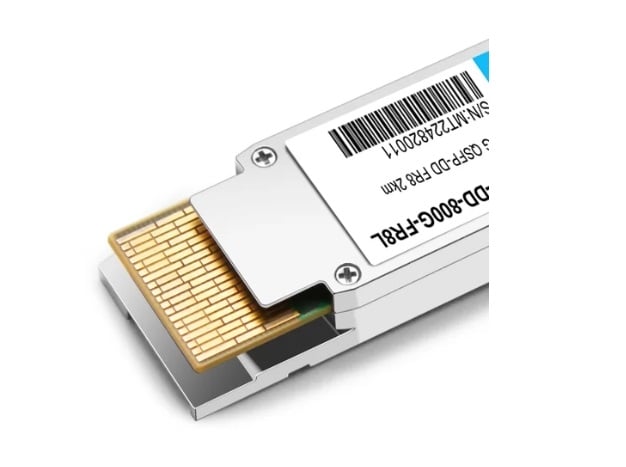
Choosing Between Active Optical Cable and DAC
When it comes to the comparison of active optical cables (AOCs) and direct attach cables (DACs), other technical aspects and performance parameters should be considered. A torrent of insights reveals that active optical cables can be used for longer sustainment owing to their ability to integrate photonically, which makes them less susceptible to electromagnetic interference. This implies that AOCs would be useful in large data and fleet deployment where long connection between devices is an intrinsic characteristic of the task. Moreover, this type of interconnection allows for devices being interconnected to be light and fluffy, owing to optical fibers being light in weight.
On the other hand, the direct attach cable, which is composed of copper as opposed to AOC and TAA and is applied in a short range of 10 meters using low DAC, is more effective and less costly. Integrated copper interconnect cables (DACs), have a larger energy consuming capacity in their active components, thus, they are more power dense and therefore cost effective since the wires designed for DACs are usually designed to only operate over short distances away from the source. Moreover, the active dielectric coupler behaved a lot better in a fixed placement, where the demand was for a high data rate for short-reach applications or connections within the server racks and adjacent switches.
When deciding between the two, considerations such as the distance required, interference possibilities, power usage, and budget must be considered. As AOCs and DACs support different parameters of use while enhancing the efficiency of the networks, they also play important roles within the network systems.
How 800g QSFP-DD AOC Ensures Optimal Connectivity
800G QSFP-DD Active Optical Cables (AOCs) offer a very effective solution considering that the big challenge for contemporary scenarios of data centers is no longer how to increase the amount of data but rather how to transfer large amounts of information over long distances using optics. These AOCs are capable of delivering up to 800 Gbps data rate, which fits high bandwidth requirements and new-age network designs. The poor voluminosity offered by the optical fiber cables in 800G QSFP-DD solutions, in addition to management issues, improves both the latency and the energy consumption compared to the regular copper offering. It improves overall performance and energy efficiency. In addition, due to the ingenious design of the QSFP-DD connectors, permanent interconnections capable of withstanding high-density interconnections are created, which are necessary for data integrity and system reliability.
Reference Sources
Frequently Asked Questions (FAQs)
Q: What are 800g QSFP-DD Optical Transceivers?
A: 800g QSFP-DD Optical Transceivers are designed as 800 Gigabit Ethernet Optical Links. It abides by the QSFP-DD MSA specifications. These are designed for high performance transmission, utilizing multi-port 800G Ethernet optical transceivers modules that can be utilized to interconnect systems.
Q: What does QSFP-DD800 mean?
A: QSFP-DD800 is a type of QSFP-DD transceiver that supports 800 Gigabit Ethernet connection. It is the newest generation of data centre and telecommunication applications focused optical transceiver that was designed to provide faster and efficient in transmission and reception of data.
Q: How does QSFP-DD to QSFP-DD connectivity work?
A: Using QSFP-DD transceivers which are compatible with QSFP-DD Chip to QSFP-DD connectivity enable devices to be connected directly. This enables the use of single or multi-mode fibre to transmit data across several kilometers depending on the type of fibre used.
Q: Can 800g QSFP-DD800 be used in a breakout configuration?
A: Yes, 800g QSFP-DD800 is applicable in a breakout configuration, for example 1x100g breakout wherein transceivers are cabled with breakout AOC or MPO-12 connectors that allow the conversions of high throughput to multiple low throughput channels.
Q: How compatible are the 800g QSFP-DD800 transceivers?
A: The 800g QSFP-DD800 transceivers are compatible with the general interface standard of the QSFP-DD MSA as well as any generically compatible devices that include routers and switches of many makes.
Q: Which cable types can be used with QSFP-DD800 cassettes?
A: The application of QSFP-DD800 transceivers allows for the usage of a number of cable types, including, but not limited to, single-mode fiber with dual LC connectors, passive twinax, and breakout cables such as MPO-12.
Q: What is the longest distance 800g QSFP-DD800 transceivers can reach?
A: The transmission distance for the majority of 800g-qsfp-dd800 transceivers can go anywhere between 1m (3ft) with passive twinax cables to dual duplex LC SMF cables at a distance of up to 2km.
Q: What is the peak bandwidth with the use of QSFP-DD800?
A: The peak modulation with the QSFP-DD800 transceivers has a data rate of about 800 gigabits per second, which is adequate for high-pressure scenarios.
Q: Do you have knowledge if the QSFP-DD800 could be substituted with any other kind of transceivers such as XFP or SFP?
A: No, the size and characteristics are different, so it is impossible to replace SFPs or XFPs with QSFP-DD800 transceivers. But in some systems, it is possible to have modules of different sizes if there are special chassis or adapters.
Q: What would be the application of the 800g qsfp-dd800 transceivers? Are there any applications that are exactly specific to that device?
A: Yes, 800g QSFP-DD800 transceivers are used in various applications such as data center interconnections, cloud computing infrastructure, other high-speed networks and other environments where the 800-gigabit Ethernet network technology is required.
Related Products:
-
 QSFP-DD-800G-DR8D QSFP-DD 8x100G DR PAM4 1310nm 500m DOM Dual MPO-12 SMF Optical Transceiver Module
$1250.00
QSFP-DD-800G-DR8D QSFP-DD 8x100G DR PAM4 1310nm 500m DOM Dual MPO-12 SMF Optical Transceiver Module
$1250.00
-
 QSFP-DD-800G-FR8L QSFP-DD 800G FR8 PAM4 CWDM8 2km DOM Duplex LC SMF Optical Transceiver Module
$3000.00
QSFP-DD-800G-FR8L QSFP-DD 800G FR8 PAM4 CWDM8 2km DOM Duplex LC SMF Optical Transceiver Module
$3000.00
-
 QSFP-DD-800G-2LR4L QSFP-DD 2x400G LR4 PAM4 CWDM4 10km Dual duplex LC SMF FEC Optical Transceiver Module
$2000.00
QSFP-DD-800G-2LR4L QSFP-DD 2x400G LR4 PAM4 CWDM4 10km Dual duplex LC SMF FEC Optical Transceiver Module
$2000.00
-
 QSFP-DD-800G-2LR4 QSFP-DD 2x400G LR4 PAM4 CWDM4 10km Dual CS SMF FEC Optical Transceiver Module
$2100.00
QSFP-DD-800G-2LR4 QSFP-DD 2x400G LR4 PAM4 CWDM4 10km Dual CS SMF FEC Optical Transceiver Module
$2100.00
-
 QSFP-DD-800G-2FR4L QSFP-DD 2x400G FR4 PAM4 CWDM4 2km DOM Dual duplex LC SMF Optical Transceiver Module
$1800.00
QSFP-DD-800G-2FR4L QSFP-DD 2x400G FR4 PAM4 CWDM4 2km DOM Dual duplex LC SMF Optical Transceiver Module
$1800.00
-
 QSFP-DD-800G-LR8D QSFP-DD 8x100G LR PAM4 1310nm 10km Dual MPO-12 SMF FEC Optical Transceiver Module
$1550.00
QSFP-DD-800G-LR8D QSFP-DD 8x100G LR PAM4 1310nm 10km Dual MPO-12 SMF FEC Optical Transceiver Module
$1550.00
-
 QSFP-DD-800G-LR8 QSFP-DD 8x100G LR PAM4 1310nm 10km MPO-16 SMF FEC Optical Transceiver Module
$1600.00
QSFP-DD-800G-LR8 QSFP-DD 8x100G LR PAM4 1310nm 10km MPO-16 SMF FEC Optical Transceiver Module
$1600.00
-
 QSFP-DD-800G-FR8D QSFP-DD 8x100G FR/DR8+ PAM4 1310nm 2km DOM Dual MPO-12 SMF Optical Transceiver Module
$1450.00
QSFP-DD-800G-FR8D QSFP-DD 8x100G FR/DR8+ PAM4 1310nm 2km DOM Dual MPO-12 SMF Optical Transceiver Module
$1450.00
-
 QSFP-DD-800G-FR8 QSFP-DD 8x100G FR PAM4 1310nm 2km DOM MPO-16 SMF Optical Transceiver Module
$1500.00
QSFP-DD-800G-FR8 QSFP-DD 8x100G FR PAM4 1310nm 2km DOM MPO-16 SMF Optical Transceiver Module
$1500.00
-
 QSFP-DD-800G-2FR4 800G QSFP-DD 2FR4 PAM4 1310nm 2km DOM Dual CS SMF Optical Transceiver Module
$1900.00
QSFP-DD-800G-2FR4 800G QSFP-DD 2FR4 PAM4 1310nm 2km DOM Dual CS SMF Optical Transceiver Module
$1900.00
-
 QSFP-DD-800G-DR8 800G-DR8 QSFP-DD PAM4 1310nm 500m DOM MTP/MPO-16 SMF Optical Transceiver Module
$1300.00
QSFP-DD-800G-DR8 800G-DR8 QSFP-DD PAM4 1310nm 500m DOM MTP/MPO-16 SMF Optical Transceiver Module
$1300.00
-
 QSFP-DD-800G-SR8 800G SR8 QSFP-DD 850nm 100m OM4 MMF MPO-16 Optical Transceiver Module
$850.00
QSFP-DD-800G-SR8 800G SR8 QSFP-DD 850nm 100m OM4 MMF MPO-16 Optical Transceiver Module
$850.00

